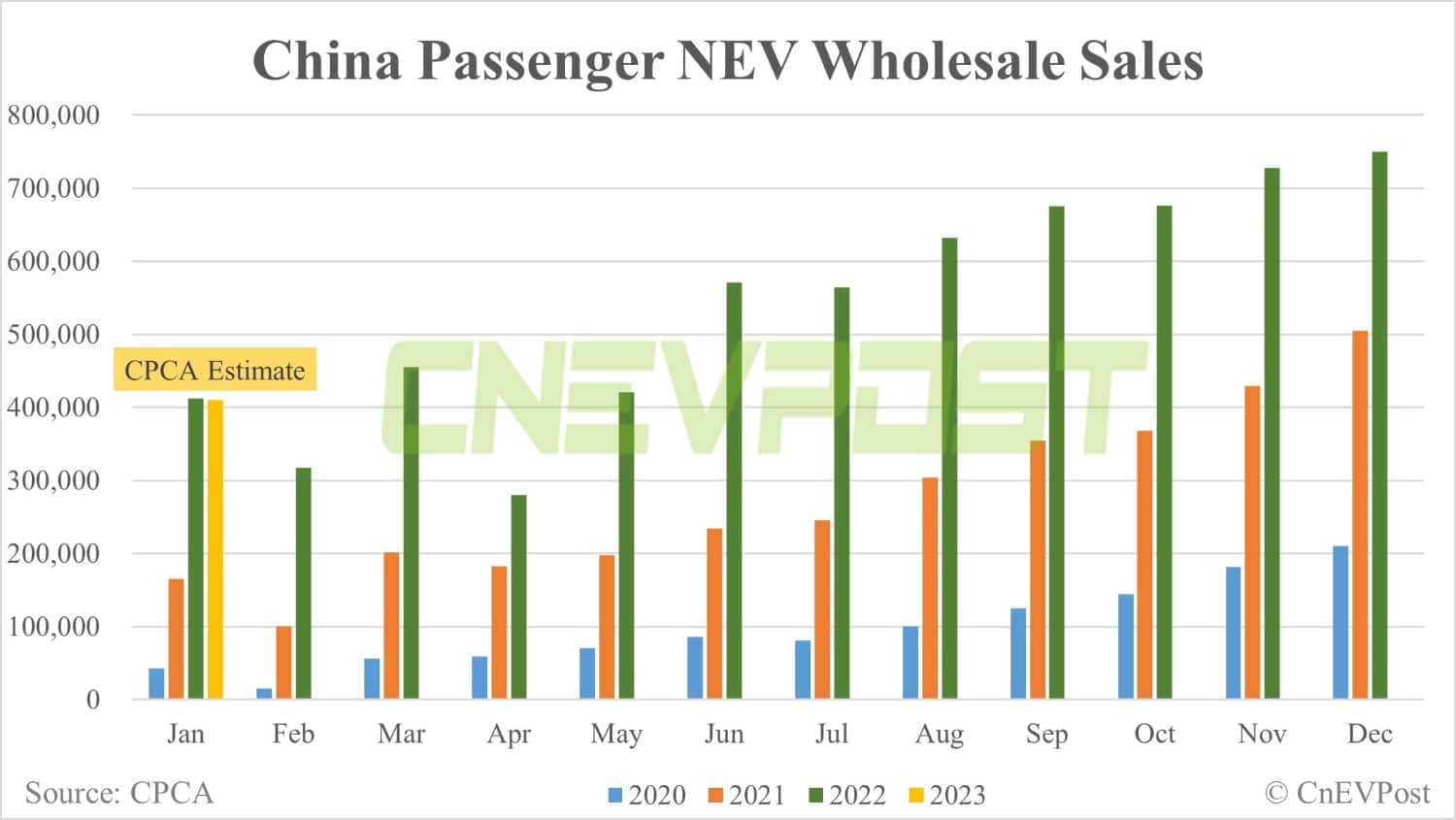CICC expects the first quarter to contribute 15.7 percent of China's 2023 NEV sales, with 20.7 percent, 27.6 percent and 35.9 percent from the second to fourth quarters, respectively.
Many automakers reported significantly lower January sales, but in the view of a local brokerage firm, China's new energy vehicle (NEV) market will begin to rebound in the next two months after seasonal factors subside.
China's wholesale sales of NEVs are expected to reach 1.5 million units in the first quarter and are on track to reach 9 million units for the year, corresponding to a 39 percent penetration rate, said CICC analyst Qiu Xiaofeng's team in a research note today.
January was the low point for recent sales as China's purchase subsidies for NEVs expired at the end of last year, allowing some consumers to bring forward demand, and as car companies slowed production and sales during China's Chinese New Year holiday, the team said.
Retail sales of new energy passenger vehicles in China are expected to be 360,000 units in January, up 1.8 percent from a year earlier but down 43.8 percent from December, according to estimates released by the China Passenger Car Association (CPCA) on January 28.
Another report released by the CPCA on February 3 showed that China's new energy passenger vehicle wholesale sales in January are expected to be 410,000 units, down about 45 percent from December and essentially unchanged from a year ago.
With only 20 days of sales before the Chinese New Year holiday in China and with the recent trend of declining lithium carbonate prices evident, some manufacturers are actively allowing production and sales to slow down in January, the CICC said.
Several local governments have issued subsidy policies for NEV purchases, and concerns about a renewed Covid outbreak continue to diminish, CICC noted.
After Tesla's price cut, price cuts by other car companies are also expected to spur accelerated demand release. In addition, the intensive launch of new models starting in February is expected to drive demand to recover beyond expectations, the team said.
CICC expects wholesale sales of new energy passenger vehicles in China to reach 1.5 million units in the first quarter, contributing about 15.7 percent to annual sales and a penetration rate of 30.2 percent.
Sales in the second through fourth quarters will contribute 20.7 percent, 27.6 percent and 35.9 percent of annual NEV sales, respectively, and penetration is expected to be 36.6 percent, 41.7 percent and 43.0 percent, respectively, the team said.
CICC believes that in the passenger car market, there is a high degree of certainty that the NEV industry will sustain growth.
On the cost side, NEVs are declining faster than traditional internal combustion engine (ICE) vehicles, and they have lower usage costs, which will prompt more Chinese consumers to abandon ICE vehicles, according to the team.
In terms of technology, NEVs are advancing much faster than ICE vehicles, and electric vehicles have the advantage of rapid technological advancement in terms of battery technology and intelligence, the team said.
CICC also noted that the penetration rate of NEVs in China has reached about 30 percent, and will go into a relatively slow growth period after the rapid growth of the past two years.
Especially in the battery electric vehicle (BEV) market, where penetration is high, steady or fluctuating increases in penetration may become the new normal, the team said.

